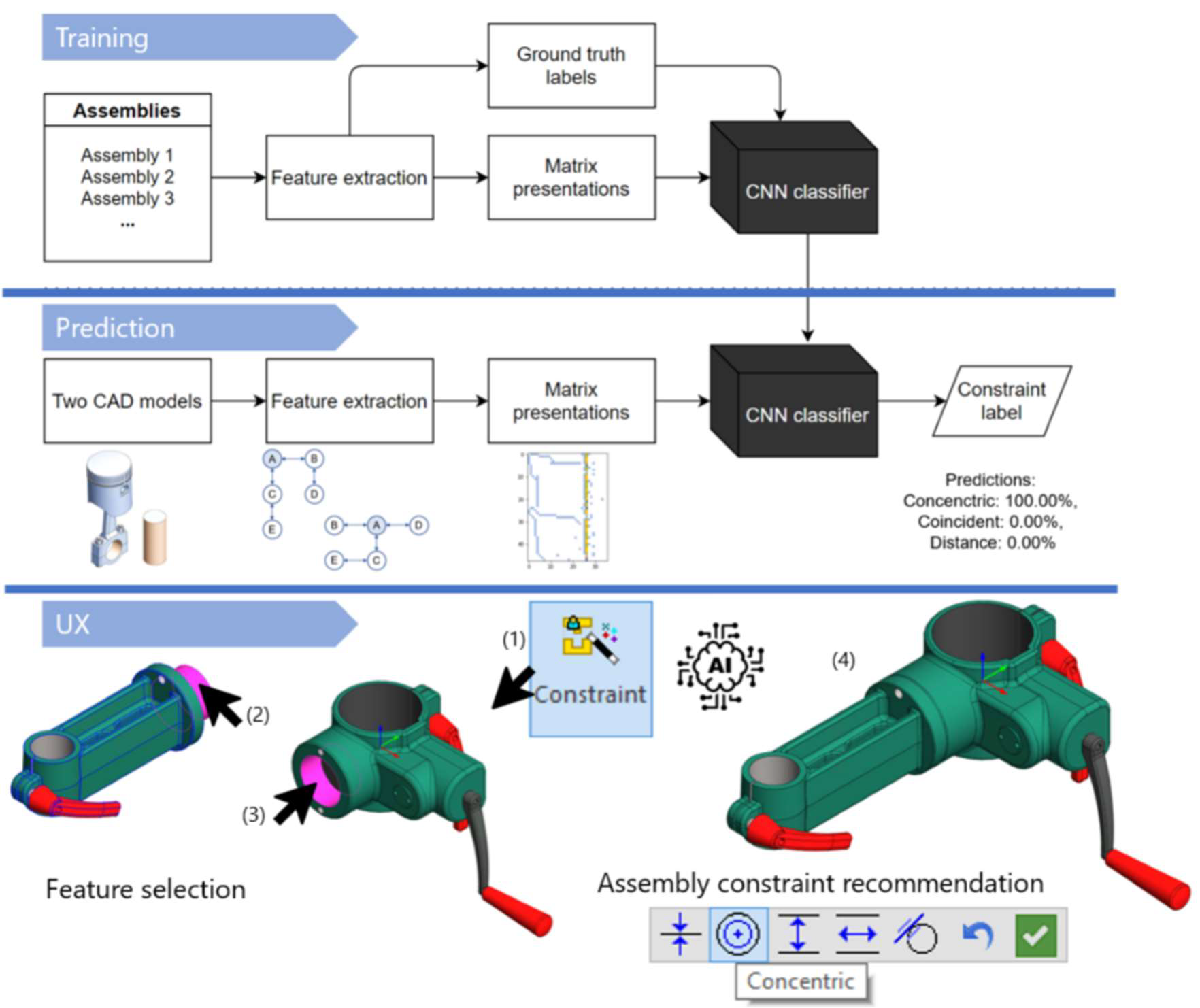Intelligent assembly constrains
We have always offered Master´s Thesis opportunities to university students to support their academic and professional qualifications. There are more than 40 Master´s Theses completed for Vertex during the years. The research results are implemented in our product development to provide cutting-edge software solutions for our customers. In the “My Master´s Thesis Journey” blog series, our young professionals tell about their Master´s theses and what they have learned and accomplished during the journey.

A slow start
With a background in mechanical engineering, robotics and software engineering, the initial
challenge in the master’s thesis journey was to determine a topic that would both fit the
hopes and dreams of Vertex Systems, while still connecting to robotics in a meaningful way.
One crucial aspect was to find a topic that would also be interesting to me. Through
numerous iterations and meetings the topic evolved from “Maybe something mechanical
related to robotics…?” to “Could we use machine learning to enhance the mechanical CAD
system?”
Even though this process took some time, it was probably the most important single step in
the thesis journey. I had been interested and involved in machine learning during my studies,
and thus the thesis provided a desirable chance to enhance my own expertise as well.
Adding intelligence to CAD assembly constrains
A quote from the abstract of my thesis best summarizes what an assembly constraint and
the demand for this kind of work is:
“Assembly constraints determine the relative position and allowed movements
between CAD models in assemblies, which are an integral part of computer aided
design. They comprise both the expertise of CAD designers and information on the
purpose of the assembly. Automation of the assembly constraint adding process
supports designers by decreasing the design time and enhancing the user
experience.” – Me, 2021
Now that we knew the most fundamental “whats” and “whys”, we can dive in on the “hows”.
To abbreviate, the goal of the thesis was to develop a convolutional neural network -based
classifier that can select the correct assembly constraint from a set pool of constraints, that
best connects two CAD models based on the models’ geometrical properties. The
development of machine learning based systems include some common steps, of which the
main steps that were present in this thesis are: data presentation construction, data
collection, system architecture design and training and validation of the model.
A more in-depth reasoning behind the data presentation and system architecture selections
can be found in my thesis , but for the scope of this blog it is enough to state that an adjacency graph -based matrix presentation was combined with a convolutional neural network architecture for a real-time capable system. Data augmentation was combined with the data collection process to maximize the amount of data. The matrix presentation was honed through training six classifier models, the best of the which reached classification accuracy of 95.46% and was selected for production.
I have always been a visual person so here is what happens under the hood of the classifier
system in ✨images✨. The trained model is used in production to provide probability
predictions of constraint types that go through filtering and are presented to the user through
the bottom-most part of the image.

Enough of the technical mumbo jumbo
Hey you! Yes, you who skipped forward after reading the scary word “convolutional neural
network”. This is a good place to start reading again.
Let’s ponder the process a little. For me, probably the most difficult part of the work was
getting words on the paper. I think this is a common problem in engineering, where doing
things is yay, whereas documenting them is more of a nay. From the get-go I had a vision of
how to implement the system, which lead to there being only minor technical difficulties on
that department. With rigorous planning the problems were conquered and eventually the
thesis finished its final form.
While Vertex has a long history with CAD systems and software development, machine
learning was an entirely new subject prior to the thesis. It was exciting to get to setup the
new machine learning system and everything related to it from scratch. CAD has a lot of
potential for automation and hopefully in the future this potential is utilized to the maximum to
make our customers’ lives even easier.
To wrap up things up
The developed assembly constraint classification system was released as a part of the new
version launch of Vertex G4 CAD during November of 2021. At the time of writing this blog
the feedback has been positive and it will be interesting to hear more about how our
customers like the feature!
Read also Iñigo Flores Ituarte`s blog post! Iñigo was guiding Joonas´ Master Thesis.
Read also other “My Master´s Thesis Journey” blog posts:
AI assisted document archiving
